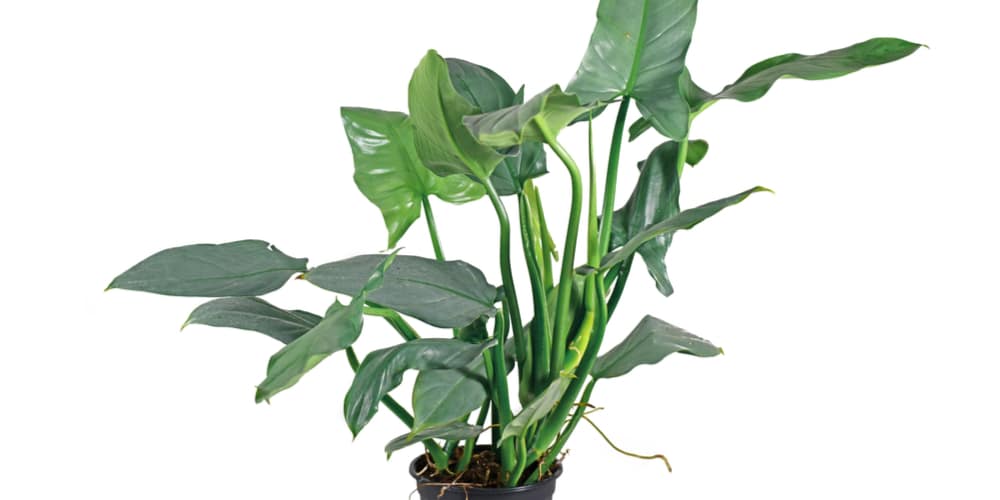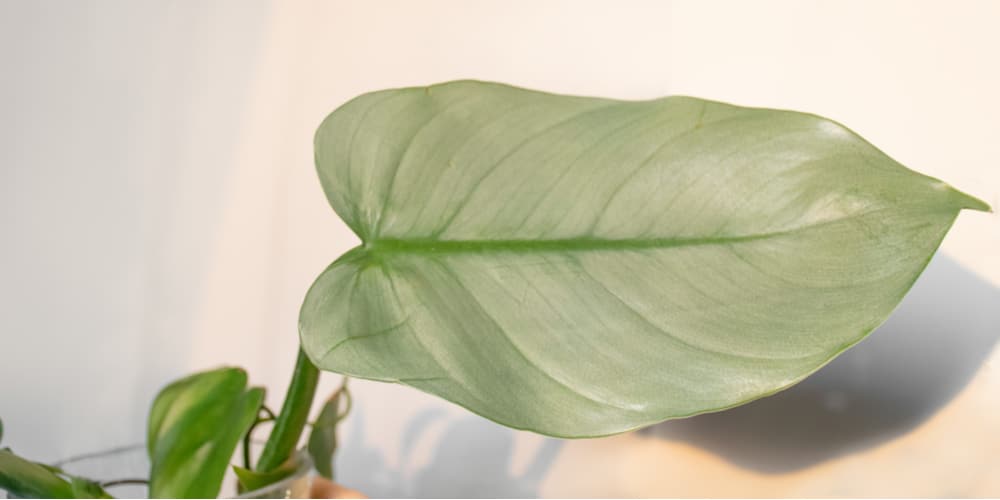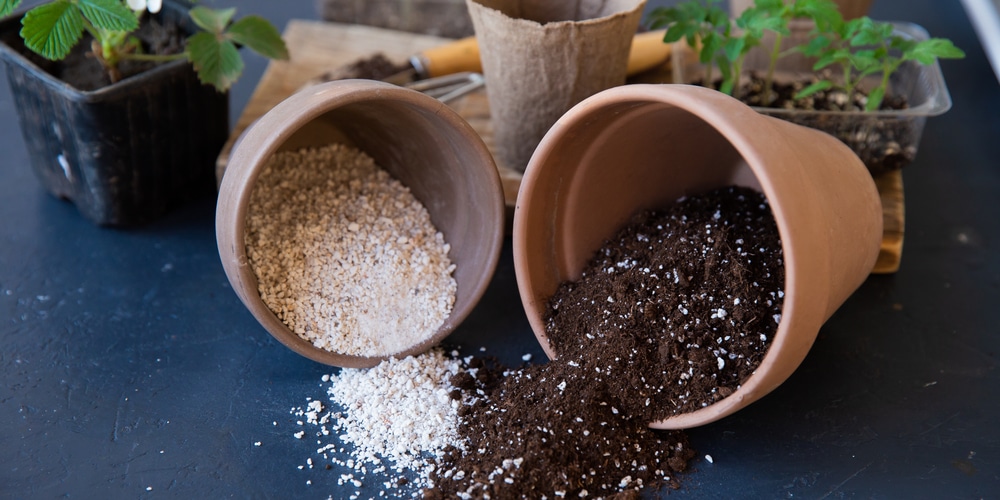Philodendrons are one of the most popular houseplants because they adapt well to low light and infrequent watering. They also do not require pruning very often. Perhaps the best trait that makes them so popular with plant owners is that they are almost impossible to kill.
The Philodendron hastatum is a rare climbing perennial vine that is part of the Araceae family. It’s native to Brazil and Argentina. New leaves on a Philodendron hastatum will usually emerge green and turn a metallic silver shade as they mature. The color is often based on the light available to the plant. Let’s look at how to grow and care for a Philodendron hastatum.
What is a Philodendron hastatum?
The Philodendron hastatum is a rare philodendron that has unique heart-shaped leaves that are a metallic silver shade. These plants can reach a height of about 3 to 4 feet, but many people keep them smaller by pruning off any new leaves that grow at the base of the plant. In the wild, they can climb trees and will grow a lot taller.
Philodendrons are great at absorbing toxins found in many household cleaners and plastics, so having a few of these plants around can be beneficial for anyone with indoor air quality issues. You may want to consider a Philodendron hastatum for your office or other rooms where you need to spruce up the decor without spending too much time caring for a plant.
In warmer climates, the Philodendron hastatum will produce flowers. The yellowish flowers generally appear in spring and are toxic to pets and humans if ingested. These plants generally don’t bloom in the home environment because of inadequate light or lack of water.
How to Care for a Philodendron Hastatum
Plants that are grown in bright, indirect light will benefit from being moved outside in the summer. Although they are great at adapting to changes, it is good to acclimate the plant to its new environment. Ensure you bring your plant back inside before temperatures drop below 60 degrees Fahrenheit. If you live in USDA Zones 9 to 11, you can grow philodendrons outside in your yard year-round.
Here are some tips to help you grow and care for a Philodendron Hastatum.
Sunlight Requirements
The philodendron Hastatum grows best in bright, indirect sunlight and can tolerate areas of lower light. Be careful not to leave your plant in the full sun, or the leaves may get sunburnt. Be aware that plants can also burn through glass, so don’t leave this plant on a very hot windowsill. You can use a shade cloth to protect your plant during scorching weather.
Watering Requirements
Philodendron Hastatum plants need plenty of water, so make sure you drench them thoroughly but infrequently. Let the plant’s topsoil dry out entirely between waterings; you can test the soil with your finger to check that the top 2 inches are dry. Be careful not to overwater; If the ground becomes waterlogged, root rot can become an issue.
Propagation
Philodendron hastatum can be propagated by way of leaf cuttings. When a new leaf is about two-thirds mature, remove it from the stem and place it on a moist paper towel or a damp piece of sphagnum moss. You can also try rooting an entire adult leaf by inserting it into some moist potting soil.
Soil and Re-potting
As with most houseplants, the Philodendron hastatum will benefit from being repotted at least once every year or two. You can use any potting soil as long as it drains well. It’s beneficial to add peat moss or perlite to improve the quality of the earth. Aim to create a soil with an acidic pH range of between 5.0 and 6.0. These plants are excellent climbers and can be trained to grow on a totem pole.
Philodendron Hastatum: Fertilization
Only use organic fertilizer with caution. Typically, you should not use any fertilizer while the plant is in full bloom.
Humidity
As the philodendron Hastatum is a tropical plant, it will benefit from humidity of around 60 to 70%. There are many ways to improve the humidity surrounding your plants:
- Mist your plant’s foliage daily
- Grow tropical plants in the bathroom or kitchen
- Use a pebble and water tray
- Group tropical plants together
- Invest in a humidifier
Philodendron Hastatum: Pruning
Over time, your plant will produce new leaves on top and old ones at the base. You can prune these lower leaves off to keep the plant looking neat. Make sure you do not damage new stems while removing leaves from the bottom of the plant.
Conclusion
Philodendron Hastatum is a rare and beautiful plant due to its unique leaf color. They have a metallic shade that looks great in a home or office environment. These plants can also be grown outdoors in the right environment. Water your plant frequently, provide an organic fertilizer throughout the growing season and repot every couple of years.


